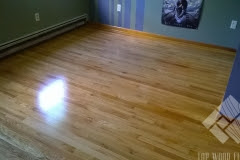How to choose hardwood flooring according to your requirements
Hardwood flooring is a product made of core plywood, hardwood or high density fibre and a top layer of hardwood veneer that is glued on the top surface of the core. It is available in almost any hardwood types. The product comes with the natural attribute of the chosen wood species in respect to a photographic layer. The product has been designed to offer better stability, specifically where moisture or heat cause issues for hardwood floors.
Inexpensive hardwood flooring is fabricated from dense solid wood and groove sides to be joined to the boards. Some manufacturers make a thinner version. The main benefit of solid wood flooring is its ability to be refinished and re-sanded after many years. It is not uncommon for solid wood flooring will last for 5 decades or more.
The main problem to consider with hardwood sanding and refinishing is its susceptibility to contraction and expansion due to humidity changes in the home. While installing a solid wooden floor over current or new concrete, make sure the manufacturer’s suggestions on the limits of moisture in the concrete.
Hardwood flooring is available in three main types:
• Parquet flooring has a very different look from regular hardwoods. They are manufactured of geometrical patterns made of unique wood patterns and wooden slats held in position by an adhesive or mechanical fastening
• Plank flooring comes in two densities, but unlike strip flooring, the widths may vary.
• Strip flooring is denoted by the density and width of the wooden planks. Strip flooring has a specific width, but the density may vary. Strip flooring ranges in density
Fundamentals of Hardwood flooring
Hardwood flooring is made in a similar way of basic plywood with the top surface being actual hardwood. Wood density is most vital as one of the main considerations in choosing the species of the wooden floor.




Comments
Post a Comment